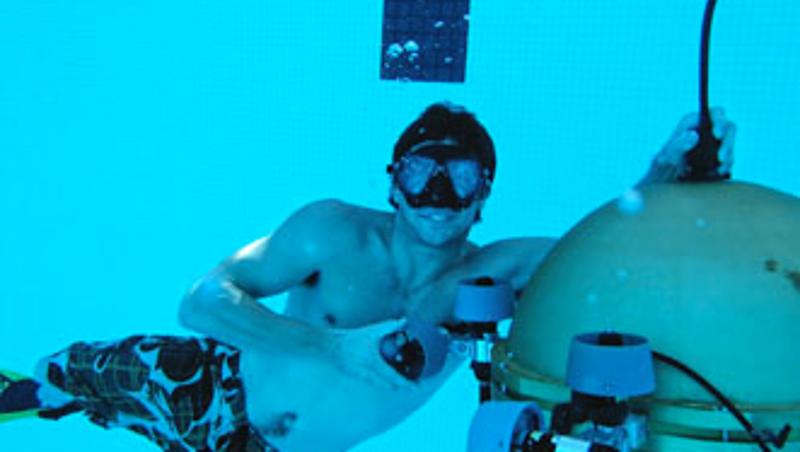
A Queensland University of Technology (QUT) engineer is seeking methods to improve underwater robots by giving them the ability to be highly manoeuvrable, travel hundreds of kilometres, stay deployed at sea for multiple weeks, and carry a wide variety of instruments.
Dr Ryan N. Smith of QUT's Faculty of Built Environment and Engineering said that currently, autonomous underwater vehicles (AUVs) fall into one of two categories.
"One uses thrusters and lots of power and is easily manoeuvrable, which makes it great for collecting high-fidelity data, but it can only work underwater effectively for a matter of hours or days," he said.
"The other is a passively activated vehicle utilising changes in buoyancy for locomotion; this is harder to manoeuvre, but can be deployed underwater for weeks or months."
Dr Smith, who has a background in mathematics and robotics, said he said he was aiming to develop a control architecture for this novel AUV, which would allow for a continuous transformation from one operational mode to another, implying that the vehicle could last a long time underwater, but also be able to complete high intensity, high energy tasks.
"Having an AUV which could do this would be valuable for monitoring the Barrier Reef, understanding ocean processes, observing life cycles, fish habitats, water cycles and so on," he said.
"If we can determine precisely when to use the higher energy thrusters and instrumentation with their higher range of movement over a multi-week or multi-month deployment, it could really change the way the ocean science is conducted: you could observe processes occurring at short and long cycles both spatially and temporally.
"From QUT Gardens Point, I could walk down to the Brisbane River, send an AUV to the Barrier Reef to collect some data, and have it return here; something you can't do currently.
"This would mean a smaller budget was needed to do research because you wouldn't need a team of people to go up there - you could simply send the device from here and it would return with the data."
Dr Smith said he chose to enter the field of marine robotics to combine his natural interest in the ocean with his mathematical background.
"This could be a very exciting development and significantly change how we research the ocean," he said.
He also said a control theory, which continuously combined the two current operational modes could be used in other robots - for example, robotic arms for household robots that need to be rigid enough to perform complex object manipulation, but also elastic enough to not cause damage upon impact.
Media contact: Sharon Thompson, QUT media officer - 3138 2999 or sharon.thompson@qut.edu.au




